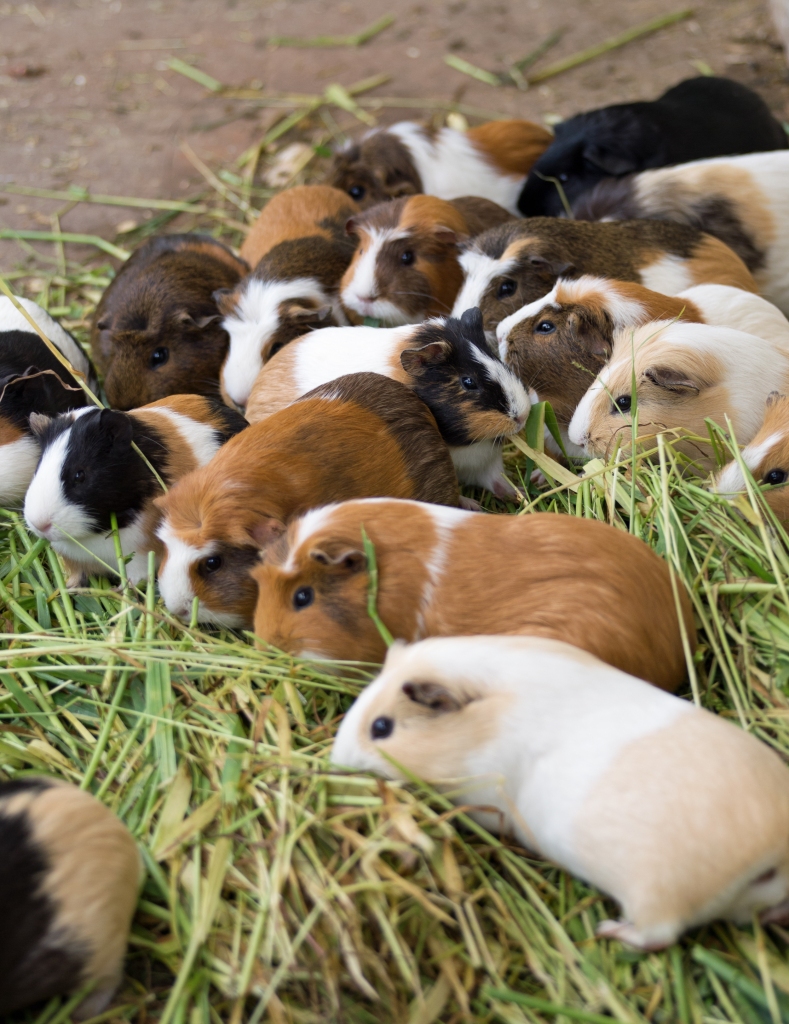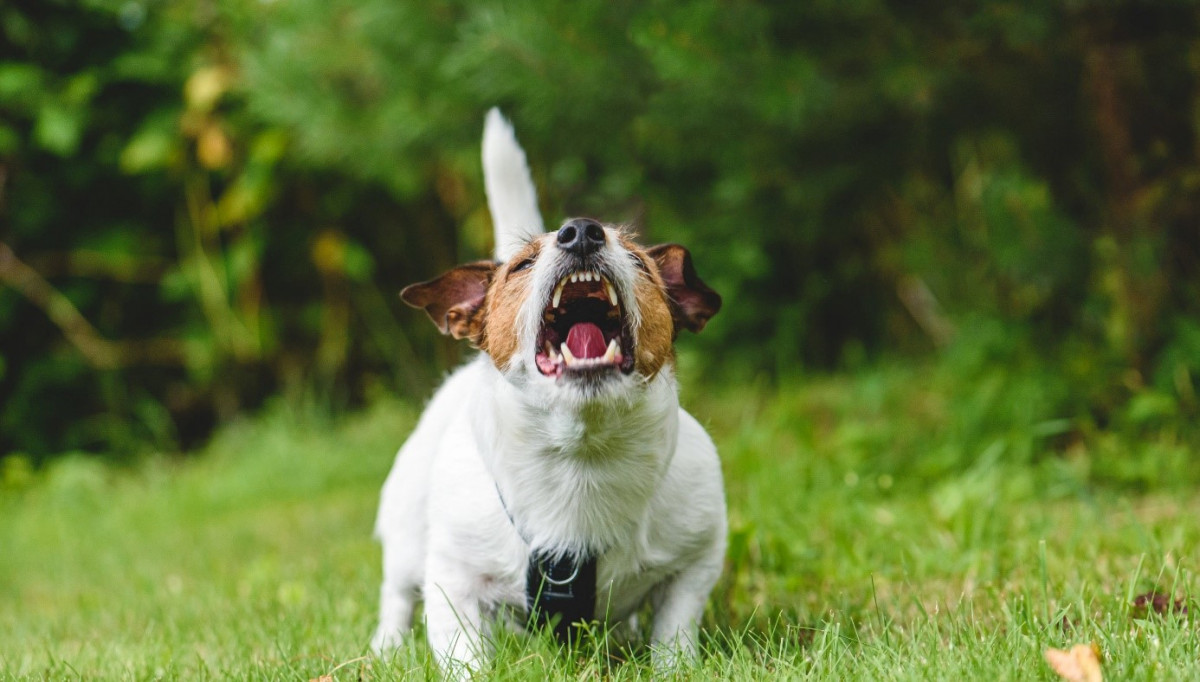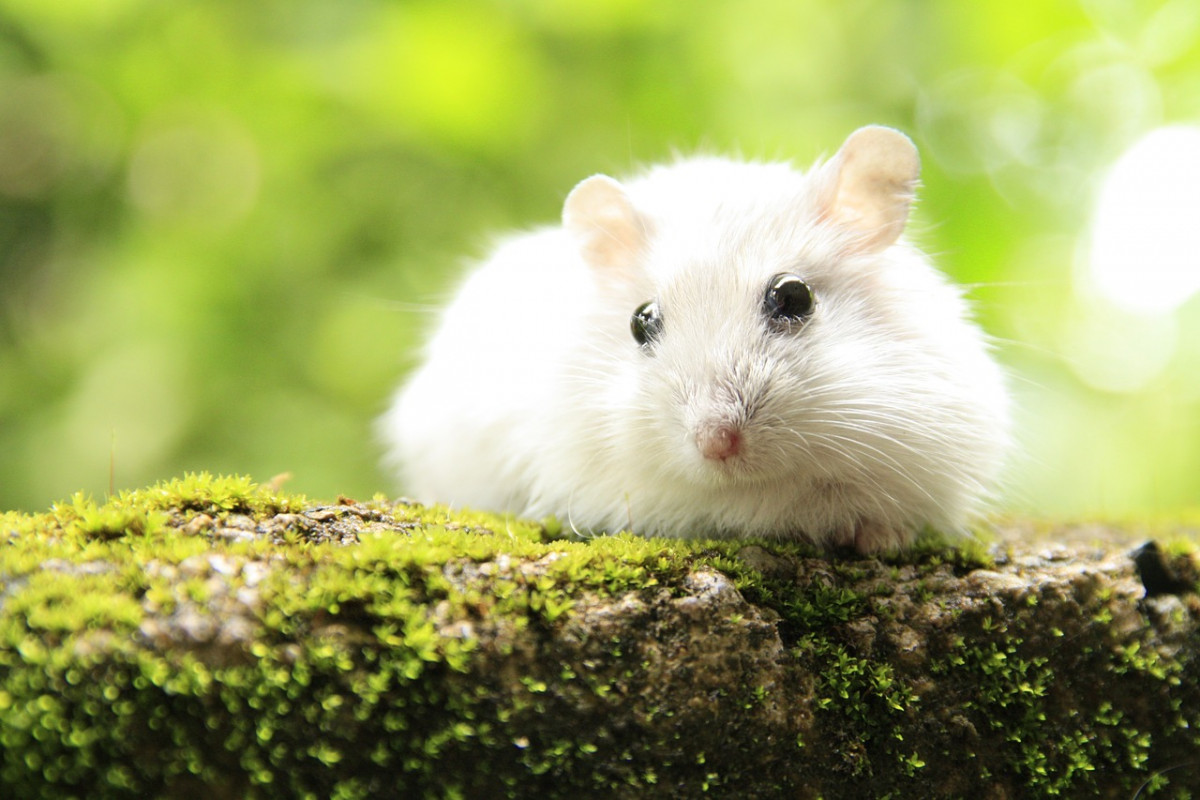
guinea pigs

As a lover of these cute rodents you are here Avonturia de Vogelkelder at the right place. With our real Cavia Village in our store in The Hague, we always have the guinea pig that will certainly conquer your heart. In our store you will find everything you need to create a comfortable home for your guinea pig. From spacious and safe cages to nutritious food and cozy sleeping places, we have it all. Our expert team is on hand to advise you on proper feeding, care and interaction with your new furry friend.

Name Dutch: Cavia
Scientific name: Cavia porcellus
Origin: South America
Age: 6 to 8 years
Height: Between 20 and 30 cm long
Wearing time: 59 -75 days
Birth: Viviparous, Nestlings
Nest Size: Usually 3 – 6 cubs
Activity: Day active
Legislation: None
Stay: spacious rodent or rabbit cage that is wide rather than high
Minimum size: 1.40×50 (LxW) for 2 guinea pigs
Food: Guinea Pigs Are Herbivores (Plant Eaters)

Description
Originally from South America, guinea pigs have a fascinating history dating back as far as 9000 years ago. In the heartland of Peru and Chile, they were known long ago by the Incas, who kept them both as sacrificial animals and for food. The guinea pigs were a welcome addition to the daily menu and were even served as a delicacy in some South American countries, a tradition that continues to this day.
In the 16th century, South America was conquered by the Spaniards, and they brought the first guinea pigs to Europe. Here they were initially mainly used as laboratory animals. It wasn't until the 19th century that wild guinea pigs began to gain popularity as pets, creating the domesticated house guinea pig we know so well today.
The Incas had already discovered that guinea pigs were a kind of pets, because when the Spaniards found them in South America, they were already quite tame. They scurried around the houses of the indigenous people. In addition to their role as companion animals, guinea pigs also served as a source of food. Even today, guinea pig meat is still a delicacy in many parts of South America.
In Europe, guinea pigs are mainly known as beloved pets. Their funny looks, distinctive sounds and friendly and social nature make them extremely popular as companion animals. People all over the world enjoy the company of these charming little rodents, who have traveled from distant lands to our hearts. The history of the guinea pig is a testament to their unique connection to humanity and their multifaceted role in different cultures.


The appearance of the guinea pig
Guinea pigs are on average between 20 and 30 centimeters long. Their body has a compact, stocky shape with a broad chest. They have no tail. Adult guinea pigs weigh between 900 grams and 1,5 kg. Although they may look a bit clumsy, guinea pigs have surprising agility and speed.
The guinea pig has a large, strongly curved nose that ends blunt with large, expressive eyes. The eyes can be different colors, such as black, red or pink. Guinea pigs have four short, stout legs with 4 toes on the front and 3 toes on the hind feet. Guinea pigs have a soft and dense coat. There are different breeds with different coat types, but in general guinea pigs have short hair. The coat colors and patterns are numerous.



Guinea pig behavior
In general, guinea pigs are known for their gentle and calm disposition. They are not animals that are quick to bite, especially if they have been well socialized with humans from an early age. Guinea pig behavior is fascinating and charming. They have their own unique personalities, but there are some common behavioral traits.
Guinea pigs are very social animals and do very well in groups. In the wild, they live in larger communities where they interact and groom each other. It is therefore advisable to keep guinea pigs with at least two, so that they have company.
Guinea pigs use different sounds to communicate with each other and to express their emotions. A common sound they make is a "squeak" or "whistle" when they are excited or happy, especially when they know they are about to be fed. In addition, they can "gum" as a sign of dissatisfaction or as a warning of possible dangers.
Guinea pigs are curious creatures and love to explore their environment and enjoy crawling in and out of tubes and nibbling on various enrichment materials in their enclosure.
Guinea pigs have good hearing and often react nervously to loud or sudden noises. They can startle easily and run away if they feel threatened. A quiet and calm environment is ideal to make them feel comfortable.



Housing for Guinea Pigs
Guinea pigs do not see depth and are not suitable for climbing with their short legs. A high cage with many floors is therefore of no use to them.
For 2 guinea pigs we keep a minimum size of 1.20×50, but much prefer 1.40×50 (LxW). Of course bigger is always better! Place the cage in a quiet place in the house, away from direct sunlight and drafts. Preferably in a corner and slightly off the ground.
Guinea pigs can be sensitive to changes in temperature, so keep the room temperature constant between 18°C and 23°C. As mentioned earlier, guinea pigs can sometimes react a bit frightened and run away. To make them feel as safe as possible, it is important that at least 1 house per guinea pig is present in the accommodation.
Toys, such as chew sticks, hay racks and balls to push against, will also help keep them entertained and active.
Usually guinea pigs are kept indoors, but you can also keep them outdoors, provided you keep a number of important things in mind.

Male or Female?
A male guinea pig is called a boar and a female is called a sow. The gender difference is a bit more difficult to see at a very young age than at an older age and requires some experience. When bears are adults you can clearly see the balls, but until the balls have descended you can only tell by the shape of the genital area.
In sows, the anus and the genital opening are closer together than in boars, and in boars you only see a circle (here the penis extends when you gently press it), while in sows it has more of a Y-shape. Male and female guinea pigs may have slightly different behaviors.
Males can sometimes be more dominant and exhibit territorial behavior. They may also try to show off their masculinity by holding their heads up and making a "growl" sound to impress females. Females tend to be more sociable and tend to show less territorial behavior.


What does the guinea pig eat?
Guinea pigs are herbivores, which means they only eat plant material. The wild guinea pig has a different diet than your guinea pig at home. While the wild guinea pig feeds on (prickly) shrubs, herbs and spices, flowers, fruits, dried grass and all kinds of dried plants, leaves (both dry and fresh), tubers, roots, grains and other available plant foods, your pet no longer has the freedom to choose its own food
Therefore, it is your responsibility to ensure that your guinea pig is fed a varied diet. The ideal would be to give them unlimited access to pasture, which refers to wild grasses and herbs. If you have safe areas outside, you can pick your own and feed it to your guinea pigs as a staple food. However, if you are unable to offer outdoor pasture, you can give leafy vegetables with a supplement of dried herbs as an alternative.

Variation is important to stimulate guinea pigs' foraging behavior and prevent them from selective eating. Guinea pigs should have access to a variety of grasses and herbs, and it is ideal to provide at least 10 types for as varied a diet as possible.
If you cannot meet this requirement or if you simply want to give a complete diet, it is important that you pay attention to the quality of the diet. For example, there are complete foods without kibble, such as the Jr Farm grainless herbs, Or Vitakraft Vita Verde Nature Dinner Herb Garden or chunks/pellets/biks as we all know them. Mixed food is really only for the tasty and it is better not to give it too often.
Whatever food you feed your guinea pigs, it is important that fresh hay is always available.


The importance of Vitamin C
Guinea pigs need vitamin C to form proteins, especially the protein collagen, which is the main component of connective tissue. Collagen holds tissues together, such as in healing wounds, preventing bleeding and maintaining healthy bones, teeth, organs, skin and genitals. Vitamin C also plays a role in the immune system and the absorption of iron and calcium, in addition to protecting the body against free radicals as an important antioxidant.
Guinea pigs cannot produce vitamin C themselves, which sets them apart from other animals. Therefore, they must get enough vitamin C through their diet. Green food, such as grass, herbs, vegetables and fruit, contains vitamin C and can be a good source for guinea pigs. If guinea pigs have a reduced resistance, are ill, are recovering or if the supply of green food is not optimal, it may be wise to give extra vitamin C.
The recommended daily amount of vitamin C for guinea pigs is between 10 and 20 mg per kilogram of body weight per day. It is essential to store vitamin C in a cool, dark place and to ensure a regular supply, as guinea pigs do not have a large storehouse of vitamin C.
Vitamin C can be given through special guinea pig food containing vitamin C, vitamin C tablets, drops or powder, but it is important to ensure that guinea pigs are getting the required amount. Too much vitamin C is not harmful because the excess is excreted through urine. However, it is always better to give the right amount to avoid wastage. If a guinea pig gets too little vitamin C, you must immediately give vitamin C to avoid serious consequences.



What do you need to keep 2 guinea pigs?
How nice that you decided to keep guinea pigs! But what do you all need? To help you on your way, we have already made this handy shopping list for you:
- Accommodation (minimum 140×50 for 2 guinea pigs)
- Dust-free, well-absorbent bedding
- Soil enrichment material (e.g. Discovery leaves or forest moss)
- At least 1 house per animal (preferably with more than 1 exit/entrance)
- Feeder
- Water bowl/bottle
- Rodent toys
- Nutrition
- Snacks





